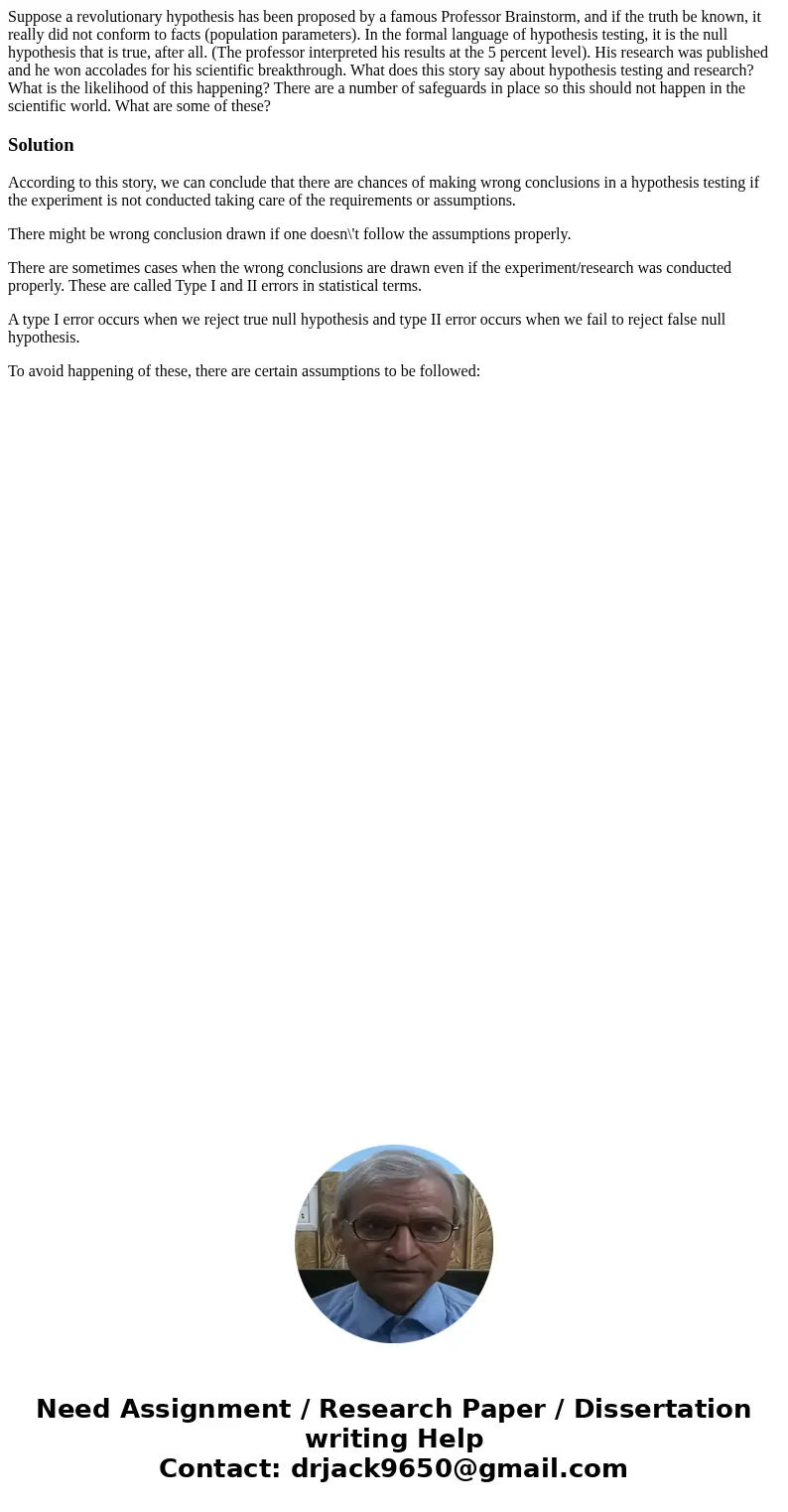Suppose a revolutionary hypothesis has been proposed by a fa
Suppose a revolutionary hypothesis has been proposed by a famous Professor Brainstorm, and if the truth be known, it really did not conform to facts (population parameters). In the formal language of hypothesis testing, it is the null hypothesis that is true, after all. (The professor interpreted his results at the 5 percent level). His research was published and he won accolades for his scientific breakthrough. What does this story say about hypothesis testing and research? What is the likelihood of this happening? There are a number of safeguards in place so this should not happen in the scientific world. What are some of these?
Solution
According to this story, we can conclude that there are chances of making wrong conclusions in a hypothesis testing if the experiment is not conducted taking care of the requirements or assumptions.
There might be wrong conclusion drawn if one doesn\'t follow the assumptions properly.
There are sometimes cases when the wrong conclusions are drawn even if the experiment/research was conducted properly. These are called Type I and II errors in statistical terms.
A type I error occurs when we reject true null hypothesis and type II error occurs when we fail to reject false null hypothesis.
To avoid happening of these, there are certain assumptions to be followed:

 Homework Sourse
Homework Sourse